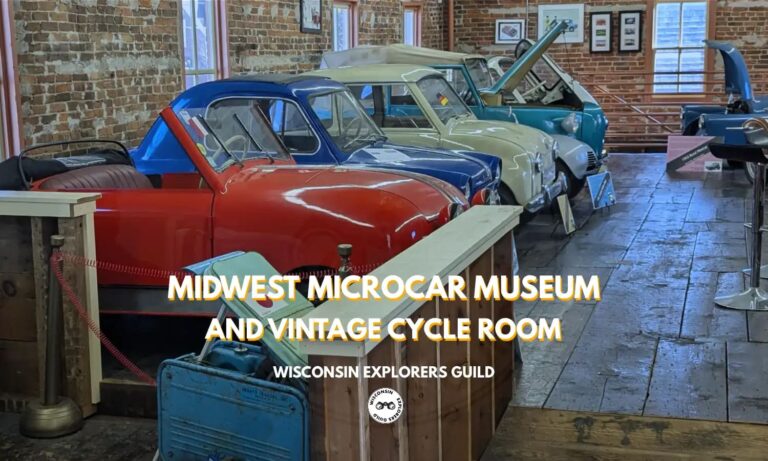In the small village of Valton, you can visit what was once a lodge of the Modern Woodmen of America featuring the folk artwork of Ernest Hüpeden.
The Travails of Ernest Hüpeden
Our story begins way back in 1871 in the Prussian region of the newly formed German Empire. A young man named Ernest Hüpeden was convicted of embezzlement from the bank where he worked.
While imprisoned, the young Ernest started painting, likely as a means to pass the time. After serving seven years in prison, Hüpeden was set free when the real embezzler confessed to the crime while on his deathbed.
After his release, Ernest wasted no time on getting out of Prussia. Not only had he lost seven years of his life, but he was, reportedly, now 20 years old. This meant he was eligible for forced conscription into the Prussian military.
Hüpeden had no interest in serving in the armed forces, so in 1878 he traveled to Hamburg and hopped onto the Herder, a boat bound for the United States.
Okay, so Hüpeden’s entire origin story seems a bit suspect. Ernest, who was born in 1858, would have been 13 when he was sent to jail. I’m not sure a boy of that age would be in a position to embezzle from a bank, but then again I didn’t live in Prussia in 1871. So who knows for sure.
In any case, after arriving in New York, Hüpeden eventually made his way to Wisconsin and traveled around southern part of the state for a few years as something of an itinerant painter.
He’d provide painting services in exchange for room and board — and the occasional drink. Or perhaps the drinks were more than occasional, as Hüpeden was known around the area as the “Drunken Painter.”
Modern Woodmen of America
At the turn of the 20th century in the United States, around the time Ernest Hüpeden was meandering around Wisconsin, fraternal organizations had become quite popular.
Membership in organizations like the Freemasons, the Odd Fellows, the Grand Army of the Republic, the Knights of Columbus, the Benevolent and Protective Order of the Elks, the Ancient Arabic Order of the Nobles of the Mystic Shrine, and the Independent Order of Foresters was on rise. Most men of the day belonged to at least one fraternal group.
Not to be left out, Charles Cullen Root, a serial entrepreneur and joiner of fraternal organizations, saw an opportunity. After being inspired by a sermon at his church in Lyons, Iowa, Root founded the Modern Woodmen of America in 1883.
The MWA not only offered the benefits of fraternity and, in the words of Root, “provided wholesome social activities and character building,” it also sold life insurance to its members.
The Woodmen held an elaborate induction ceremony that has a member initiate blindfolded with a device called a hoodwink (supposedly where the English language gets the term, “hoodwinked”) and forced to ride a rambunctious “goat.” This device was something like a sawhorse on three wheels that only sort of resembled a goat.
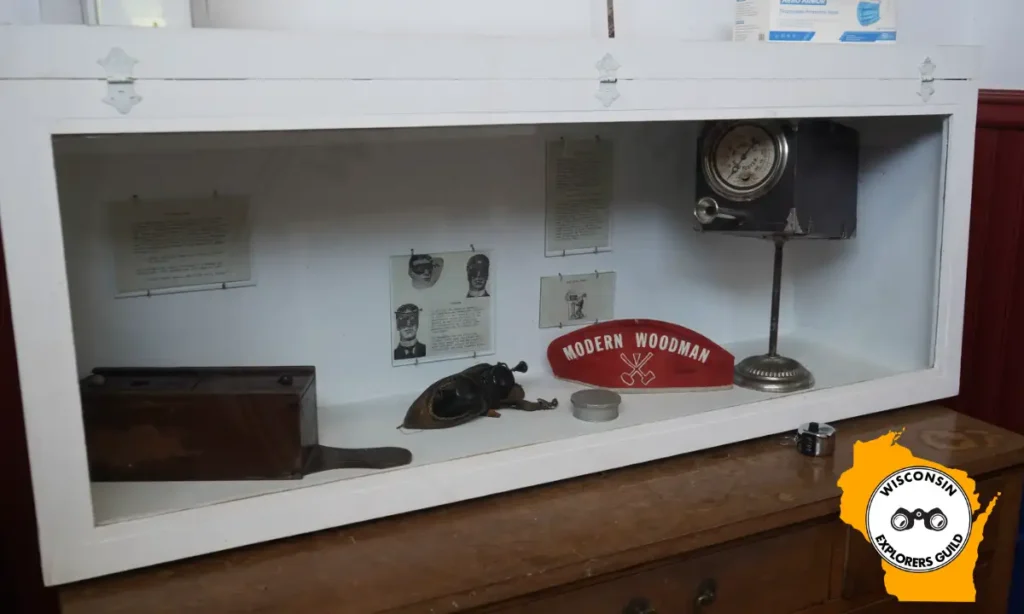
Attending MWA members controlled this goat in an attempt to have the initiate rider fall off. If the riding applicant was able to stay on the goat for a requisite amount of time, he would be granted membership. If he fell off, all the assembled members would laugh at him … then he’d get to try again.
Once inducted, new members were able to join their fellow MWA mates in playing elaborate pranks on fellow members, practicing synchronized marching drills using ceremonial axes made of wood and aluminum, and drinking copious quantities of alcohol safe from the judgement of their wives.
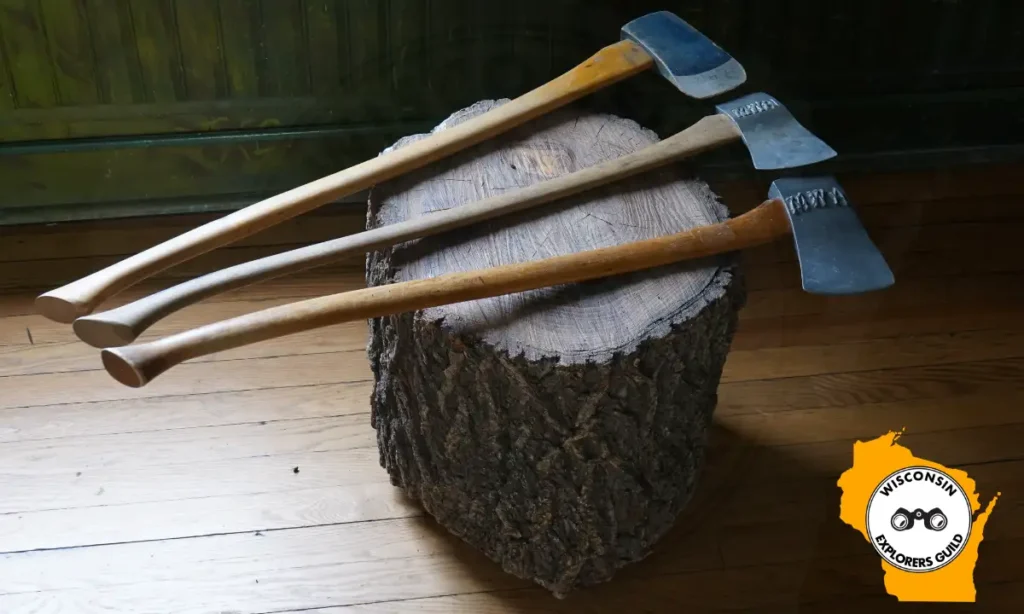
Like any good fraternal organization, the MWA offered franchise opportunities across the United States. Any interested party, for a fee to the national headquarters, could set up their own Woodmen group.
Local MWA chapters were known as “camps”, and one of those camps was started in Valton, Wisconsin.
Our Latest Exploration …
- Bathtub SpringIn southwestern Wisconsin you can find an endless supply of fresh water flowing into a roadside bathtub — a place known as the Bathtub Spring.
MWA Valton Camp 6190
Valton resident Charles Gibeaut apparently liked the message and purpose of the Modern Woodmen of America, and in 1897 established MWA Camp 6190.
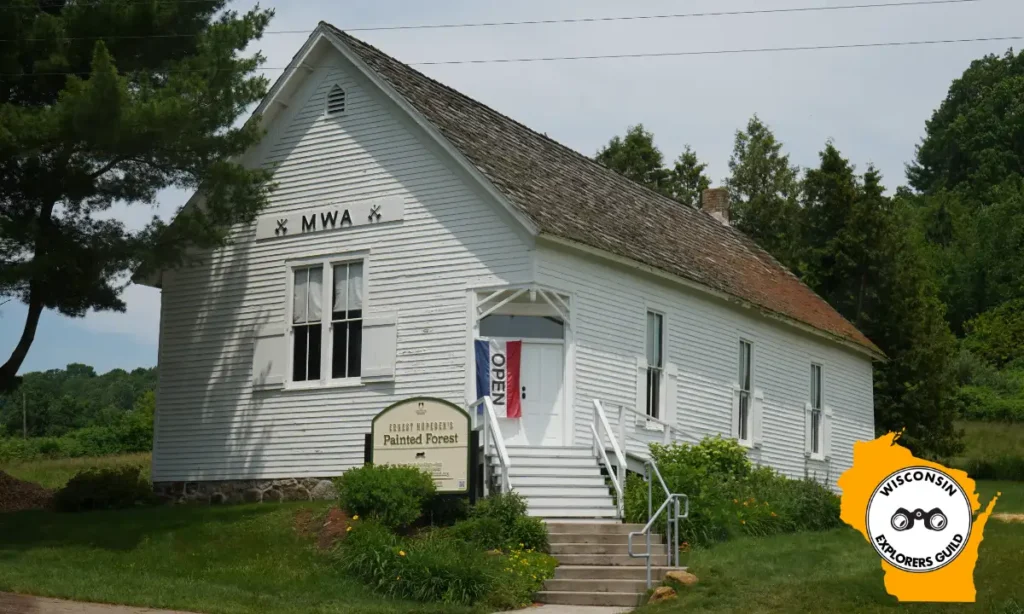
Like all All MWA lodges, the Valton building featured a large open room with a vaulted ceiling. It was, as mandated by the MWA charter, built along a north-south axis with the only door set in the south-east corner.
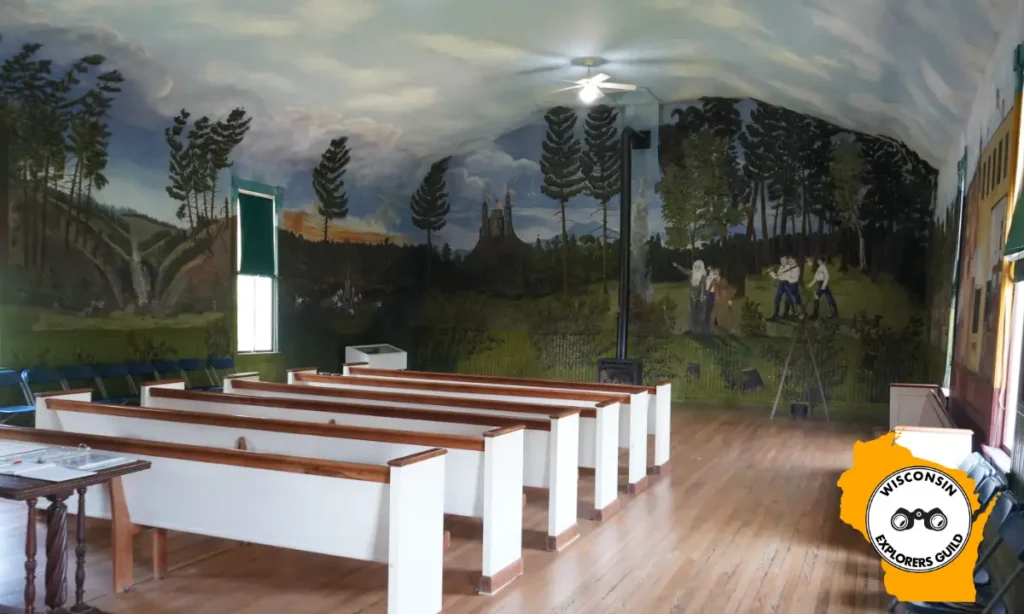
In addition to the open floor plan and directional alignment, all MWA lodges also featured a stage. But the decoration of those stages was left to the discretion of the local camps.
And that’s where our friend Ernest Hüpeden re-enters our tale.
Ernest Hüpeden’s Painted Forest
Sometime in 1897, Hüpeden found himself in Valton, where his reputation as a painter got the attention of the newly established camp of the MWA.
In 1898, Gibeaut and the other leaders of Camp 6190 approached Ernest with an offer to paint the curtain of the lodge’s stage in exchange for room and board.
Hüpeden took the job, and he exceeded his employers’ expectation with his rendition of the USS Olympia in the 1898 Battle of Manila Bay during the Spanish-American War.
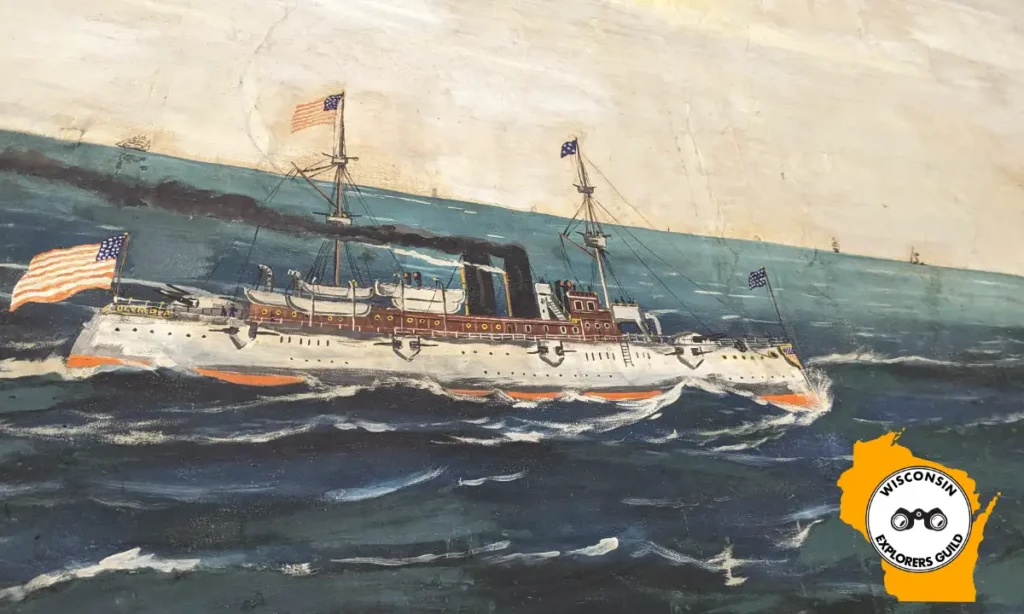
This painting impressed the camp’s founding members, so they asked Hüpeden to paint the interior walls of the lodge with images of the organization’s rites of passage and community purpose.
Ernest took to the job in earnest, painting every wall of the lodge with a narrative tale of a man riding a wild goat (invoking the initiation rite) becoming injured in a forest. After this, the man survives a number of trials with the help of the MWA.
He’s captured by a malevolent group of men dressed a lot like Prussian soldiers. But he escapes being sacrificed by them and burned at the stake with the assistance of Modern Woodmen of America members, who are dressed in 1890s-era baseball uniforms.
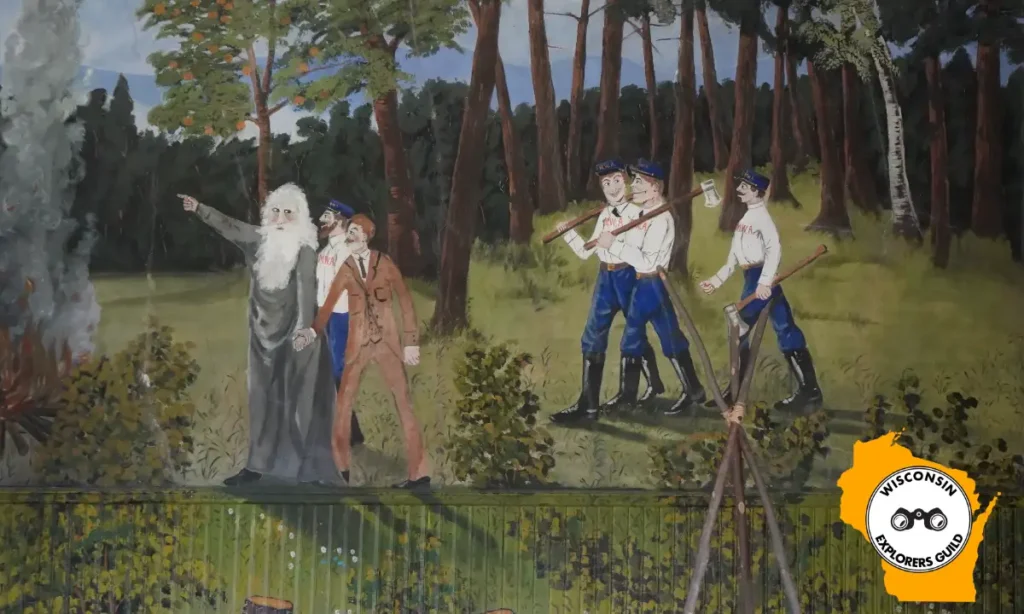
Hüpeden’s tale continues with the Head Consul, a bearded figure in gray robes, showing the man the path to his redemption leads to the MWA Camp, represented by a German-style castle high on a hill — symbolizing the security of the MWA ideals.
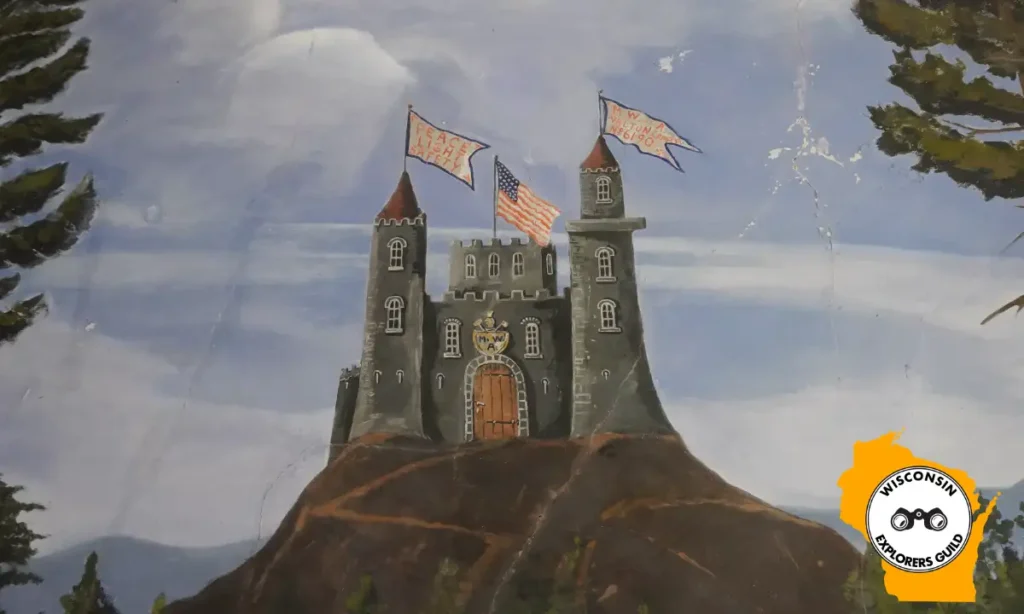
As the visual story progresses, the viewer is treated to images of peaceful community life, with families supported and protected by the fraternal power of the MWA. On the east wall, Hüpeden painted what he envisioned Valton would look like in 100 years. He was a bit ambitious. Today Valton boasts a population of around 50 residents.
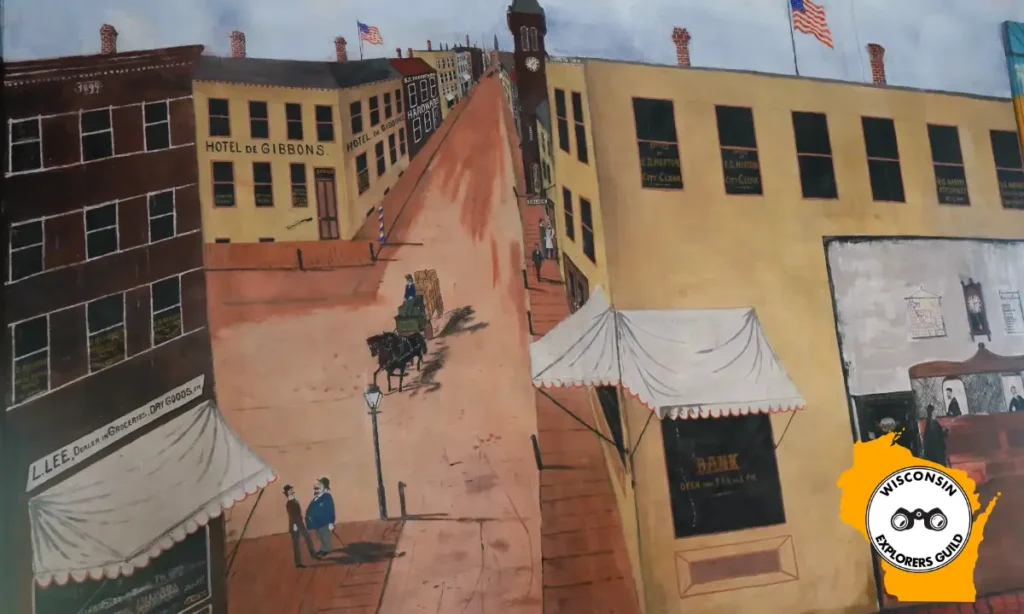
After two years of painting, Ernest Hüpeden finished his work on the hall in 1899. The building, known as Wood Hall, was used as the Modern Woodman of America Camp 6190 until sometime in the 1920s, when the chapter was dissolved.

And, despite proving to be a valuable asset to the Modern Woodmen of America, Mr. Hüpeden never went through the initiation to join their ranks. It’s been hypothesized that this may have been a result of Ernest’s fondness for alcohol. The village of Valton sits in the borders of Woodland Township, which was a historically dry county.
Decay and Restoration
After the demise of MWA Camp 6190, the building fell into disrepair and passed through various owners in the ensuing decades.
For a time it was owned by various descendants of Charles Gibeaut (founder of MWA Camp 6190). it was used as a Town Hall and community center for Valton and Woodland Township, playing host to 4-H exhibits, dances, weddings, school plays, and graduation ceremonies.
Sometime in the 1960s, Ronald and Dolores Nash bought the building and worked to preserve Hüpeden’s murals and prevent the building from falling apart. They named it the Painted Forest.
It was purchased by the Kohler Foundation in 1978. Through them, and under the custodial efforts of the Historical Society of Upper Baraboo Valley, the long work of restoring Hüpeden’s definitive work began.
The site is now maintained by Edgewood College out of Madison.
Kickapoo Hardwood Company Mural
Ernest Hüpeden was said to be quite the prolific artist. He reportedly painted many items — everything from barn walls to glasses and bottles to kitchenware and more.
But despite his willingness to paint anything, not much of his work aside from the Painted Forest is known to remain. However there is another other notable piece of his known to exist, It is, fortunately, also on display in Valton.
In 1908, Hüpeden was hired by August Kriegel to paint a similar mural on his lumber company in La Farge. That mural, painted on tongue-in-groove pine boards, is on display in the front room of the Painted Forest building.
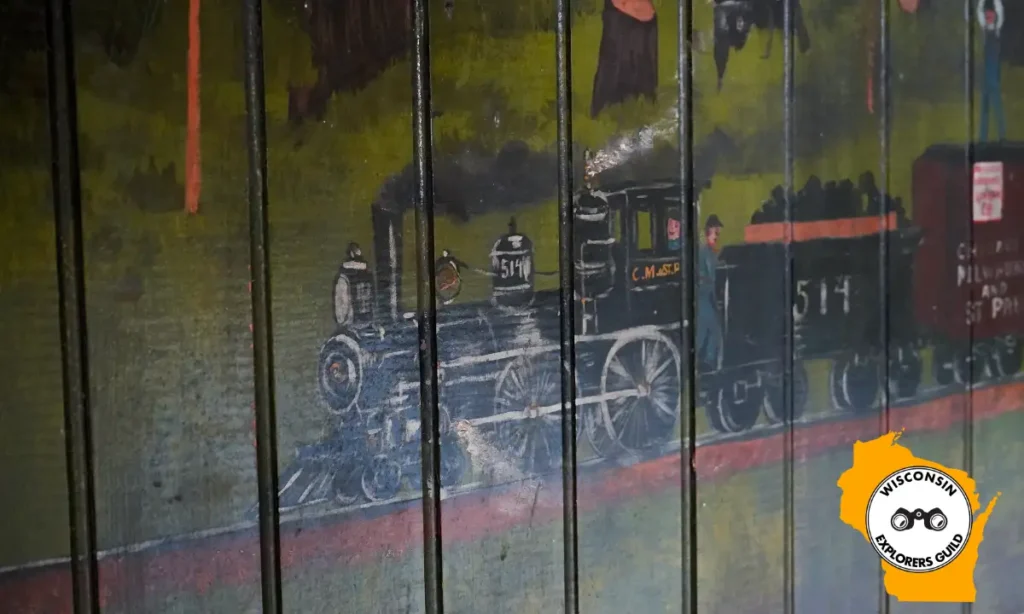
Resolutions
After painting his magnum opus in Valton’s MWA Camp 6190, Ernest Hüpeden stayed around southern Wisconsin for at least ten years (as evidenced by the Kickapoo Hardwood Mural). Not much else is known about his life or his work. But we do know when he died. In 1911, his body was found in a snowbank near Hillsboro, a tragic end to a talented folk artist.
The Modern Woodmen of America still exist today. The organization has dispensed with the more ceremonial aspects of fraternalism, but it still provides life insurance and other investment services to its members under the name Modern Woodmen.
Charles Cullen Root, founder of the Modern Woodmen of America, was kicked out of his own organization just a few years after he started it. He moved to Omaha, Nebraska and, not one to let a good (profitable) idea go to waste, founded the Modern Woodmen of the World. Today they are known as WoodenLife, providing fraternal life insurance services to their members. They remain distinct from and unaffiliated with the Modern Woodmen.
Header image: Detail of Ernest Hüpeden’s Painted Forest. Photo from the author’s collection.
Ernest Hüpeden’s Painted Forest
Ernest Hüpeden’s Painted Forest is open to visitors from June through mid-October on Saturdays and Sundays, 11a.m. to 4:00 p.m.
- E846 Painted Forest Dr, Valton, WI 53968
- GPS Coordinates: 43.574091, -90.273988 (Google Maps)
- What3Words: ///wept.jogging.distracted
- Online at https://paintedforest.org/



